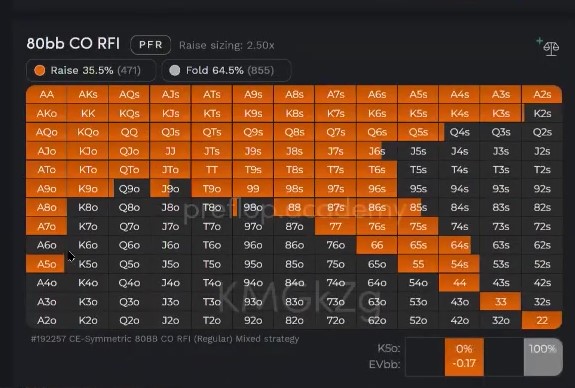This article is derived from a lecture given for the Poker Academy by Vlada Stojanovic. The focus of the first part was to highlight and discuss two common preflop mistakes often committed by players. These mistakes include going all-in too frequently as a big blind versus a small blind open, and isolating or folding too much when facing a limp at 17.5 big blinds (link to part 1).
In the continuation of his lecture, Vlada delves further into other scenarios where players commonly commit strategic blunders. In this installment, we’ll be examining the pitfalls of open raising incorrect hands from the small blind. Additionally, we’ll discuss the frequent mistakes made in multiplayer scenarios, providing insight into how these errors can be avoided to improve overall poker strategy.
- RFI wrong hands from SB
- Completing too tight against wide ranges
- Completing too loose against strong ranges
- Missing squeeze spots
RFI wrong hands from SB
Vlada discusses how to construct a raising range from the small blind, emphasizing the importance of including the right hands. In addition to opening with strong hands, he recommends looking for hands that perform poorly as limp-calls and using them as raises.
You can think about it in a way that which hands are performing kind of bad at the limp-call scenario. So what hands are going to be break even limp-calls. Those hands we can use for a raising range.

Chip EV – multiway spots
The lecture shifts to multi-way spots, with the Vlada pointing out another common mistakes: completing too tight against wide ranges, completing too loose against strong ranges, missing squeeze spots.
Completing too tight against wide ranges
When facing a wide opening range and a wide calling range, Vlada suggests punishing your opponents by raising widely.
It is important to find these raises. We want to punish them if they have somewhat wide opening and calling ranges. And we want to do it with the broadway type hands. For example hands like: JTs, QTs, are going to do very good job of getting them to fold a lot of hands that dominate our hand (QTo, KJo and sometimes even ATo). Always think about offsuit hands because they constitute the biggest part of the villain’s range.

Completing too loose against strong ranges
Vlada warns about defending too widely in four-way pots. In this scenario, we are on the BB with J8o, and there is an open from HJ and a call from BTN and SB. The pot is 7,88bb.
Defending 4-way is not going to be that great. With this type of hand (J8o), all of these guys will have a bunch of hands that dominate us. And realising equity postflop against three opponents is not going to be that amazing.
Another play that players often don’t make, but should, in this scenario is to play all-in. So our strategy should look as follows.
We are going to be somewhat tight defending, even though we are getting amazing odds. But we are going to look to jam hands like J9s, QTs, like all suited broadways are going to be pretty straightforward jams here. There is already almost 8bb in the pot. We can jam our stack and get some folds. The opponents should have some traps in their ranges, but it is not happening and jamming wide in this kind of spots is very important.

Missing squeeze spots
In the next multiway scenario, we are looking at 80bb effective stacks. CO opens, BTN calls, and we are on the BB with ATs.
What I think the population is missing here a lot is squeezing with suited broadways. Flat is going to be OK here, but I think that raising is going to outperform flatting. Just think about their ranges. ATs is ahead of the 35% CO opening range by a lot. We just want to be putting more money in.
As you can see from the chart, even with this depth of effective stack, the solver recommends playing all-in with a small portion of the range. Vlada justified why.
It is really hard to outperform jamming when we’re out of position. Our equity realization especially multiway is not going to be great. Even if we have a skill edge. There is not much we can do. Please also remember that this is Chip EV and as soon as we introduce some ICM, there will be less jamming.
You can watch the full lecture by Vlada Stojanovic below.
Final word
Grasping how player ranges interact is crucial in making informed decisions during a game. We reiterate this principle often, as it’s immensely vital when mastering poker. The goal isn’t to have you parroting strategies that you’ve learned from charts without understanding. When you truly comprehend a situation, you’re able to independently draw the right conclusions. This is the very essence of playing poker.
See you in the last part of the series.



